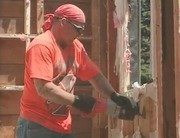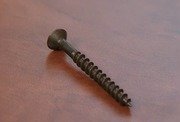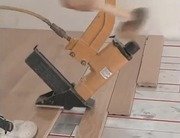Working With Unilock Tumbled Concrete Pavers
Bob joins Brian Kallmeyer (from Unilock) to talk about concrete pavers. Unlike natural stone, these pavers are made in a mold, so they are easy to work with. In tight areas, there's handwork with mallets. In larger areas, it's done by machine.
Clip Summary
Bob meets with Brian Kallmeyer (from Unilock) to discuss the company's tumbled concrete pavers. The product starts out as a high-density (minimum 8,500 PSI mix) concrete paver. The density is achieved by taking a pretty dry mix, with good aggregates, such as local granite, which is put in a 3-story machine that presses it to a very high compaction and compression point.Originally, to tumble the pavers, installers would just throw the fresh, shiny, square pavers into an old cement mixer and roll the pavers around. Since then, the process has become more complex, and the resulting product is easy to work with. Unlike the natural stone it duplicates, these pavers have been made in a mold, so they are dimensionally stable.
Nick Pastore, certified Unilock installer, finds the Unilock product easier to install than natural stone, because all the pavers are uniform, and have smooth edges.
To prepare the bed, Pastore first put down a 12-inch compacted gravel base. Then he laid a regular washed sand bed on top of the compacted gravel. He uses 1 1/2-inch aluminum electrical conduit on top of the gravel base to establish a proper height (setting the conduit to any pitch he may need to achieve).
Next, Pastore removes the conduit, fills it in with sand, trowels over it, and begins setting the pavers into place. The pavers are laid and tapped into place.
Settlement is the biggest challenge. A well-compacted base is the best defense. Pastore has used a vibratory plate compactor to tamp everything down. In tight areas, there's a lot of handwork with mallets to be done, but, in larger areas, they do it all by machine.
In the last step, the polymeric joining sand is swept over the entire work area and the compactor is run across it one more time. Because a modular pavement will want to creep outward, Pastore's crew uses a PVC edge restraint with spikes that are driven into the ground to hold the restraint in place. The edger only picks up the bottom half of the stone, allowing the landscaping to come right up to the pavement, creating a contiguous surface.






